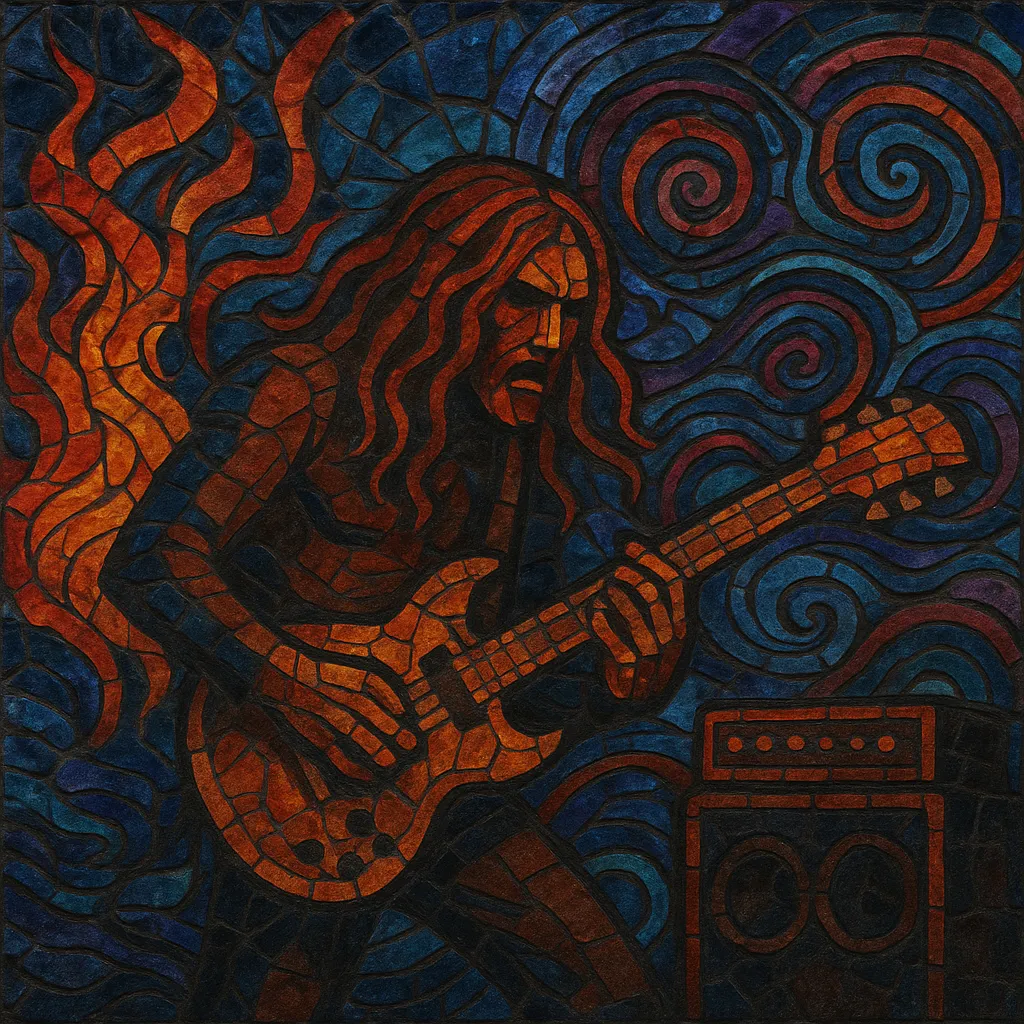
Heavy psych is a louder, denser offshoot of late‑1960s psychedelic rock characterized by fuzz‑soaked guitar tones, wah‑drenched solos, thunderous drums, and a visceral low‑end. It takes the exploratory jams and mind‑bending studio tricks of psychedelia and pushes them toward proto‑metal weight and volume.
Musically, it leans on blues‑based riffs, pentatonic and modal improvisation (especially Dorian and Mixolydian), droning vamps, and feedback‑saturated climaxes. Production often favors analog saturation, tape echo, phasing, and other period effects that magnify a sense of heady, cosmic intensity.
The result is a sound that bridges psychedelic freedom and hard rock punch—music that feels both trippy and physically overwhelming, laying essential groundwork for heavy metal, stoner rock/metal, doom, and space rock.
Heavy psych emerged as the heaviest edge of the psychedelic rock explosion. Bands amplified the blues‑rock backbone of the British and American scenes with extreme fuzz, cranked tube amps, and extended improvisation. Blue Cheer’s seismic covers and Iron Butterfly’s organ‑fueled workouts epitomized a strain of psychedelia that favored volume and grit, while The Jimi Hendrix Experience and Cream fused virtuosity, studio experimentation, and crushing dynamics.
As players pushed louder rigs and thicker distortion, the music naturally drifted toward what would soon be called heavy metal. Acts like Sir Lord Baltimore and Leaf Hound brought riff‑centric aggression, while Hawkwind steered the style into cosmic repetition and motorik propulsion, foreshadowing space rock. Many heavy psych records paired side‑long jams with raw, live‑sounding production that celebrated feedback, phasing, and tape echo.
By the mid‑1970s, heavy psych’s DNA spread into early metal, hard rock, and progressive experiments, and the label itself became less common. Still, its palette—overdriven fuzz, jam‑oriented forms, and trippy effects—remained foundational for doom’s slow crunch, stoner rock’s desert haze, and the space‑bound grooves of cosmic rock.
A revival blossomed with crate‑digging reissues and new bands channeling classic tones with contemporary heft. Earthless, Radio Moscow, Acid Mothers Temple, and others reignited interest in long‑form jams, analog saturation, and hypnotic riff cycles. Festivals and boutique labels helped establish a sustained global scene, ensuring heavy psych’s feedback‑lit flame continues to influence heavy and psychedelic music alike.

